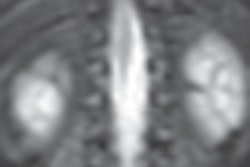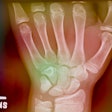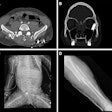Procedure volume for radiography/fluoroscopy (R/F) systems in the U.S. has declined over the past five years, most likely due to increased use of CT for procedures once reserved for R/F, according to a new report released this week by market research firm IMV Medical Information Division of Des Plaines, IL.
What's more, the size of the R/F installed base has declined over the past half-decade, and fewer facilities are planning to acquire new R/F systems in the coming years, the report found.
The IMV report indicates that hospitals with more than 150 beds performed 17.2 million R/F procedures in 2009, down 11% from 19.3 million procedures in 2004, the last time IMV analyzed the market segment. The decline has been at an average rate of 2.2% per year.
It appears that the drop is occurring as many gastrointestinal imaging procedures that were once within the purview of R/F -- such as double-contrast barium enema exams -- have been supplanted by CT-based studies such as virtual colonoscopy, according to Lorna Young, senior director of market research at IMV.
"Gastrointestinal imaging procedures have been going to CT," she told AuntMinnie.com. "Virtual colonoscopy would be one of those things, but there are a number of procedures where CT is being used for [gastrointestinal imaging]."
The installed base of R/F systems in the U.S. has shrunk, as well, and at a slightly higher rate than the dip in procedure volume. The IMV census estimated the installed base at 4,805 units at 2,070 hospital sites having 150 or more beds; this is 24% lower than the 6,360 units that were installed as of the 1998/99 census, which covered 2,200 hospitals with 150 or more beds. In addition, the number of R/F systems per site at hospitals with 150 beds or more has fallen from 2.9 units per site to 2.3 units.
Among technology trends, an increasing number of R/F units can acquire images digitally, the census found. In 2009, 79% of the installed based had digital image acquisition capability, compared with 60% in 2001. A full 100% of the new R/F systems installed in 2009 had digital capability.
On the other hand, only 27% of the installed base had flat-panel digital capability. Of units shipping, 42% of R/F systems shipped in 2009 were flat-panel systems, compared with 36% in 2004.
In future purchasing plans, the census found that among hospitals with more than 100 beds, 26% of sites plan to purchase a new R/F unit in the next three years, down from 34% in the 2004-2005 census and 39% in the 2003 report.
By Brian Casey
AuntMinnie.com staff writer
August 30, 2010
Disclosure notice: AuntMinnie.com is owned by IMV, Ltd.
Related Reading
U.S. PACS market rides on replacement sales, June 25, 2010
Procedure volume grows for noncardiac angiography, July 21, 2009
Cardiac cath lab procedures fall 11% over past 2 years, May 26, 2009
Mammography procedure volume drops 16% since 2000, March 17, 2009
Growth rate for PET procedure volume slows to single digits, February 17, 2009
Copyright © 2010 AuntMinnie.com



















